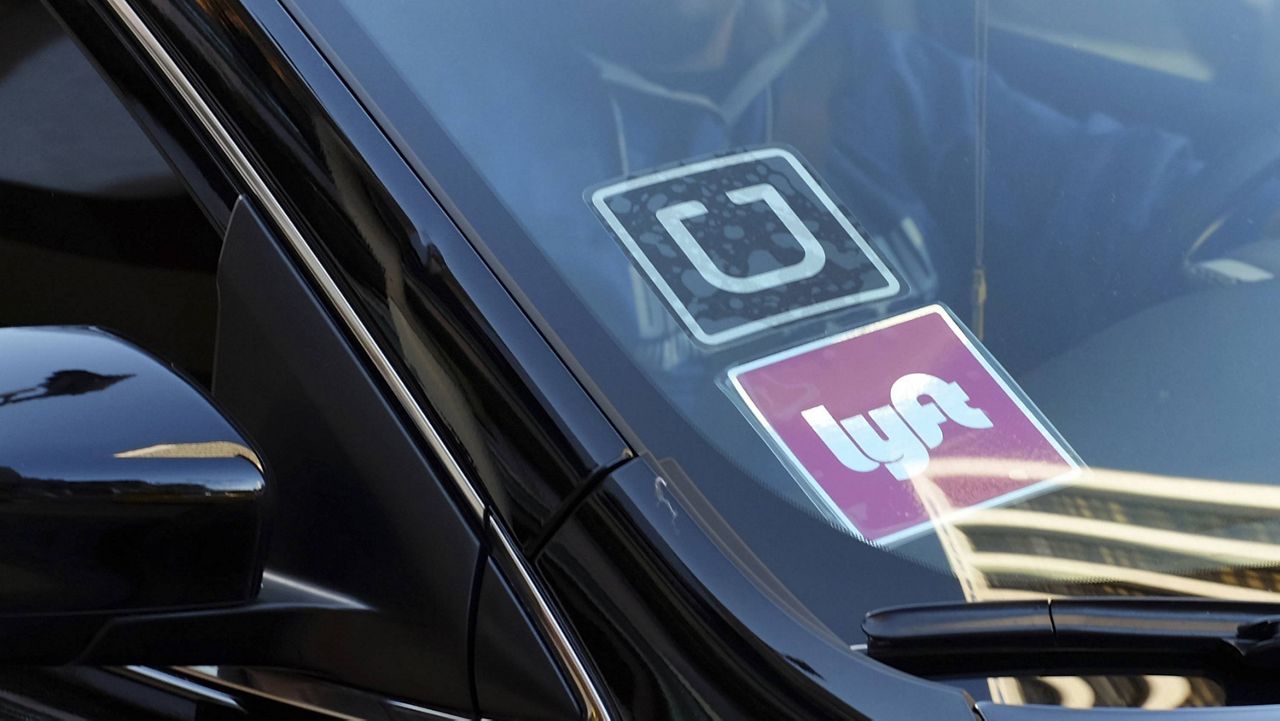SACRAMENTO, Calif. — Uber, Lyft and other ride-hailing companies will need to accelerate the electrification of their drivers’ vehicles under a first-of-its-kind regulation California adopted Thursday.
Taking effect in 2023, the new Clean Miles Standard increases the percentage of ride-hail trips that need to be zero emissions. It also incentivizes carpooling and trips that connect with public transit and active transportation options, such as bikes and scooters.
“Ride-hailing allows travelers to avoid driving and the hassle of parking and for some even to forego a vehicle altogether,” said California Air Resources Board Chair Liane Randolph during a public hearing for the new standard. “But as the TNC market has grown, so too has increased vehicle miles traveled and emissions, decreased transit use and growing congestion in some locations.”
Using 2018 as a baseline, the Air Resources Board found that 1.25% of California light-duty vehicle miles traveled were associated with Uber, Lyft and other so-called Transportation Network Companies, or TNCs.
In 2018, 600,000 TNC vehicles logged 4.3 billion miles in the state, generating 1% of all light-duty greenhouse gas emissions.
“Our TNCs have been growing, not only in terms of their proportion of vehicle miles traveled but the number of vehicles on our roads, especially in our cities,” California Senator Nancy Skinner said during the hearing, where she cited a 2018 San Francisco Transportation Authority study that found TNCs were responsible for 570,000 vehicle miles traveled within San Francisco city limits every weekday. “It’s very essential to our important climate protection, traffic congestion and air quality goals to get a handle on this.”
Skinner authored the 2018 law SB 1014, which directed the Air Resources Board to adopt and the California Public Utilities Commission to implement a greenhouse gas emissions reduction program for TNCs. The Clean Miles Standard is the result of that legislation.
While small TNCs with five million or fewer miles traveled per year are exempt from the new standards, as are wheelchair accessible vehicle trips, Uber, Lyft and other TNCs that provide more than five million miles of trips annually would be subject to the rule that requires them to submit two-year plans for compliance in January 2022 and to begin to meet the standard’s emissions reductions targets one year later.
In 2023, 2% of TNC vehicle miles traveled would need to be zero emissions. Those percentages ramp up year over year to 50% by 2027 and 90% in 2030. Achieving those miles would not mean converting every TNC driver vehicle to a zero-emissions electric, however — only those that log the most miles.
About 10% of TNC drivers log more than 10,000 ride-hail miles; the majority drive fewer than 5,000. The Air Resources Board estimates that achieving 50% electric vehicle miles traveled by 2027 would require just 21% of ride-hail vehicles to be zero emissions. Getting to 90% electric vehicle miles traveled by 2030 would require that 46% of TNC cars be electric.
By 2035, ARB estimates the Clean Miles Standard will result in TNCs contributing 2 billion annual EV miles in California. Without it, the share of EV miles by TNCs would be negligible, the agency said.
“Lyft supports CARB’s EV and greenhouse gas targets for TNCs and has consistently advocated for aggressive targets and complementary policies that would make those targets achievable,” a Lyft spokesperson told Spectrum News 1.
Last year, Lyft said it was committing to 100% electric vehicles on its platform by 2030.
Noting that the Clean Miles Standard would force TNCs to electrify their fleets 42 times faster than the average light duty vehicle operator in California, Lyft is advocating for modifications to existing federal, state and local incentive programs to help its drivers be able to afford EVs, which currently cost more to purchase than their gas-powered counterparts.
While TNC fleets have a higher percentage of hybrid vehicles than the public at large, the Air Resources Board said that greenhouse gas emissions per passenger mile were higher for TNCs than for the California passenger vehicle fleet as a whole.
The reason for the disparity is a phenomenon known as deadheading, or miles traveled without a passenger in the vehicle. In 2018, 38% of TNC driver miles were dead heads that generated emissions without achieving any passenger miles.
“We think this is a really important standard,” said Elizabeth Irvin, senior transportation analyst with the Union of Concerned Scientists. “California is setting an example for the rest of the country in how to regulate ride-hailing emissions, so it’s important to get this right.”
According to the Union of Concerned Scientists, ride-hailing trips are 69% more polluting than the trips they replace, while non-pooled Uber and Lyft trips are 47% more polluting than a private car trip.
“The standard has a potential be a win-win not only for people who are experiencing less air pollution and reducing greenhouse gas emissions but also for drivers who in the long run stand to really benefit from switching to EVs.”
The Air Resources Board estimates that TNC drivers who switch to a zero emissions vehicle would save $1,670 in lower fuel, maintenance and vehicle costs in 2027 if they drove 20,000 miles annually, or $2,212 if they drove 30,000 miles. Industry-wide, the agency said the regulation would provide a net savings of $215 million in 2030.



